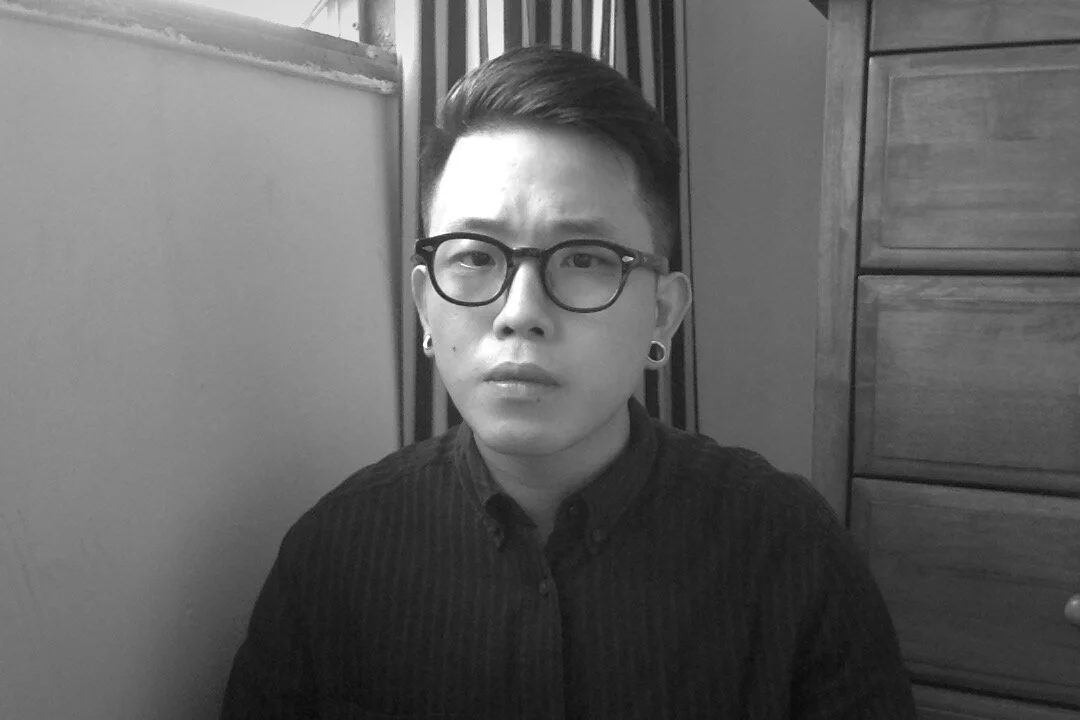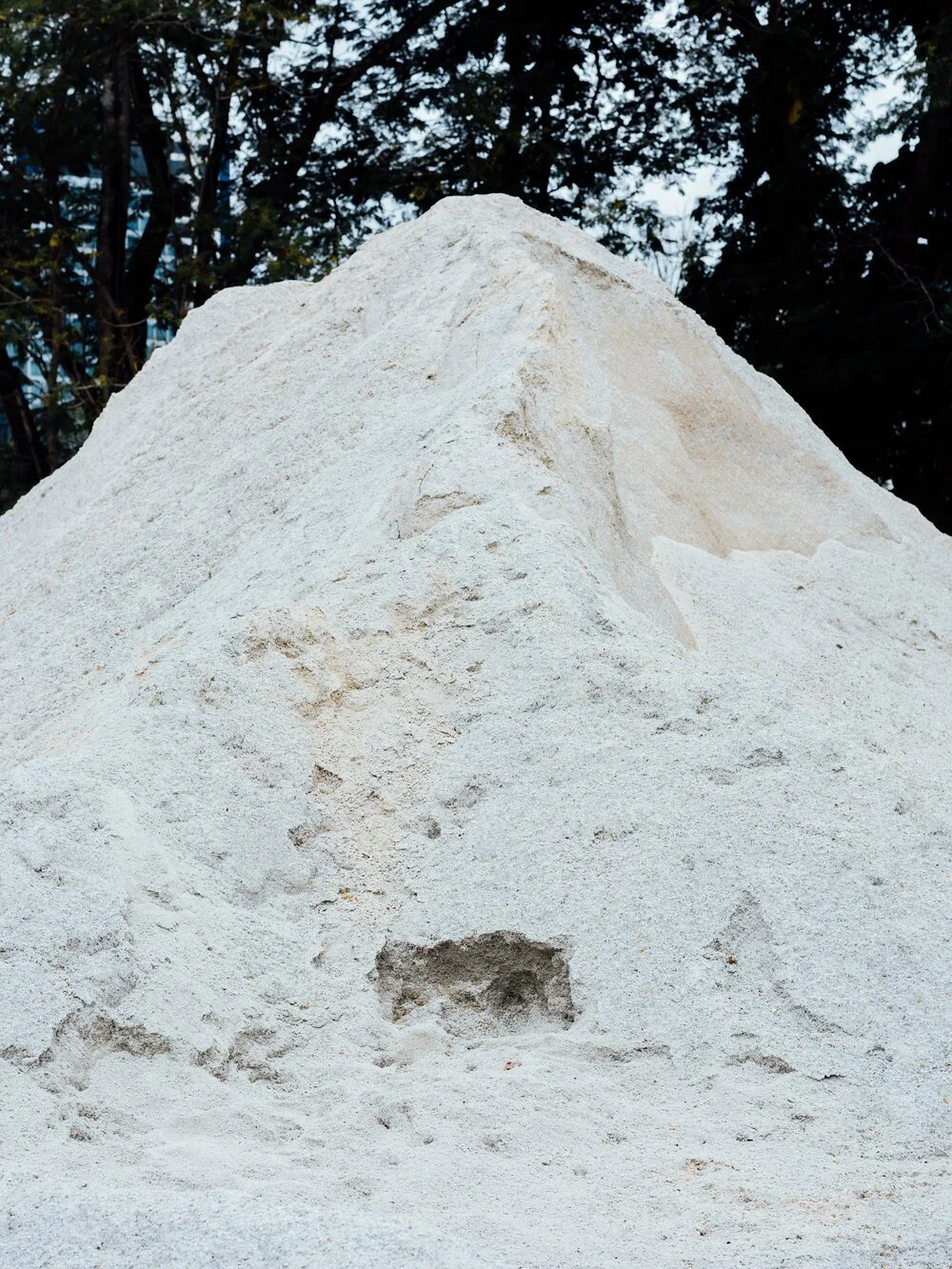Fresh Face: Alvin Lau
Photographing architecture in Malaysia
A&M's Fresh Face is where we profile an emerging artist from the region every month and speak to them about how they kick-started their career, how they continue to sustain their practice and what drives them as artists.
Alvin Lau.
At 7pm on 19 June 2021, steel scaffolding on the DASH highway under construction in Malaysia’s Klang Valley collapsed. It left two workers injured. Images were quick to circulate online: rebar penetrating violently out of solid concrete, bent from gravity’s pull; the neon orange of a tractor’s grappling hook pulls a chain, which in turn is tenuously connected to a fallen scaffold wrapped in blue and green mesh, all lit in the imperious afterglow of a too hot, too sticky evening. These pictures are infrastructure porn, evoking the perverse pleasure of seeing concrete megaliths fall apart under their own physical and symbolic weight. Two days later, however, news reports were reassuring: highway traffic flow was back to normal, no concern needed. Few outlets cared to mention that one of the injured workers had died.
This disconnect is what grounds the work of Kuala Lumpur-based photographer Alvin Lau. Infrastructure, in his reading, is deeply ironic. Highways, bridges, and roads are meant to seamlessly connect people, but the pursuit of frictionless travel leaves a story of urban detritus and human loss. What goes into the making of infrastructure? What temporaries serve to make these concrete monuments? How do we, in turn, turn these fleeting forms into monuments themselves?
Alvin Lau, Borderline, 2020. Image courtesy of the artist.
Each image in Alvin’s Borderline series, completed in 2020, takes a structure and makes it into a monument, blurring the language of industrial landscapes and platonic forms. A pile of bricks becomes a ziggurat, a fence cuts across the page in perfect two-point perspective, a twig-like tree trunk pleads to be read as a straight line. Vitruvius’s rules for architecture, ‘firmitas’, ‘utilitas’ and ‘venustas’, i.e., commodity, firmness, and delight, come to mind. Alvin’s subjects sit heavy and assuredly in the space of the photograph but are likely to disappear in the space of days or months, once the bricks are used, the sand has filled uneven ground, and another edifice is completed. These images are testaments to instances of the liminal state between built and unbuilt; instances that can only be captured in the instant click of a photographer’s lens.
But what gives Alvin’s images their defamiliarizing sense of time, that is, its ability to capture in an instant, is also what he sees as photography’s failure as a medium. Too often, Alvin gripes, photograph is seen as a tool to communicate pure information. The ease of taking a photograph—and its consequential profligate circulation—has made it a useful tool for disinformation and propaganda.
“The world Alvin creates, however, is not very habitable. The fantasy of infrastructure is also the fantasy of the authoritarian masculine, a coupling the political scientist Cara Daggett has termed “petro-masculinity.””
In contrast, for Alvin, observation becomes a critical practice. He first became seriously interested in photography to combine his various interests, including walking, cycling, and narrative storytelling. In his walks and bike rides around Sentul, where he grew up, and around Kuala Lumpur, he honed a particular eye for interpreting the unceasing development around him. His photographs create a different version of reality. It is slightly detached, slightly too cool-toned for near-the-equator light, and highly idealised. In this sense, Alvin’s photographic practice is not dissimilar to writing creative non-fiction. Accumulated, his photographs set a foundation of context, creating a gateway into the world through his eyes. The photograph, like a piece of infrastructure, is a way to get from one place to another.
The world Alvin creates, however, is not very habitable. The fantasy of infrastructure is also the fantasy of the authoritarian masculine, a coupling the political scientist Cara Daggett has termed “petro-masculinity.” If the infrastructure porn of the DASH highway is the grainy phone picture with “Forwarded many times” warnings in Whatsapp groups, then Alvin’s is the hyper-produced 2020s-era Playboy editorial. In a series of pictures of construction fences, these stark and strong structures cut violently across the page, creating clear border lines in the middle of the image. These images hint at their own shortcomings. Just like how construction sites are inaccessible to a wider public, Alvin’s beautiful images are apparitions from a familiar lineage of the world of the petro-masculine.
Alvin Lau, Borderline, 2020. Image courtesy of the artist.
Alvin Lau, Borderline, 2020. Image courtesy of the artist.
Alvin Lau, Borderline, 2020. Image courtesy of the artist.
In our conversation, Alvin hinted that he had begun to explore a world beyond the still photograph. Perhaps the moving image? Perhaps installation? In September 2020, to exhibit Borderline, Alvin printed them on vinyl and pasted them on the fence behind the Zhongshan Building—which had just been built—to mark the closure of a forested road and to hail the arrival of a new apartment. To this day, no one has come to remove the photographs. May they stand as monuments to the transitory.
Interview
Alvin Lau, Borderline, 2020. Image courtesy of the artist.
Alvin Lau, Borderline, 2020. Image courtesy of the artist.
Could you talk about your background as an artist?
I am a self-taught artist. Photography has been my main medium of consolidating and expressing my ideas. It started out as a hobby when I was 16, and I was then selected for a few photography programmes over the years, which included a six-month artist residency programme with HOM Art Trans.
Could you share how you have maintained your practice after university? What are the important factors that kept you going?
Maintaining my own practice after school has not been an easy feat , since I did not technically finish my Diploma in Business Administration. A large portion of my understanding of the fine arts are from cumulative experiences I gained over the years. Staying curious has kept me going. I ask myself questions instead of arriving at answers most of the time.
Alvin Lau, Borderline, 2020. Image courtesy of the artist.
You write that your series, Meditation is the Practice of Death, concerns “where physical life form meets its very own cessation”. But I think this idea is broadly applicable to your practice at large. Your photographs of infrastructure, in particular, take this impermanent state and freeze it in a picture. Do you see photography as a kind of cessation?
I see the term “cessation” in photography as a personal acknowledgement that photography has its form of limitations. But acknowledging such terms also means that I make attempts to challenge the boundaries of photography.
You grew up and live in Sentul, and have developed a body of work around it. Could you tell us more about Sentul, its recent gentrification, and your attempt to capture a sense of place? Why does it fascinate you as a subject?
I think what fascinates me about photographing Sentul comes from the idea of wanting to understand a landscape , initially taking inspiration from William Eggleston and Stephen Shore, who tried to define mundanity in much of their work.
I have an emotional attachment to Sentul and thus find it fascinating. I make works that are hints of Sentul to decontextualise the place and define it in my own way.
Alvin Lau, Borderline, 2020. Image courtesy of the artist.
Your series Is This What Love Is is quite a departure from your other work. For one, there are human subjects. When do you choose to photograph people? What do you see as the difference between portraiture and still life? Is there one?
This is based on the nature of most projects that I work on, but I guess being a bit more objective with my photographic works, I do not categorise subjects much more. Photography is photography.
Who has been a mentor or an important artistic influence, and why?
Maggie Steber, Jorg Bruggeman, Tobias Kruse, Sim Chi Yin and Ian Teh. While they have different styles, they are all larger-than-life personalities who have taught me more than I could ask for.
What was one important piece of advice you were given?
Be prepared to fail but stay optimistic.
Alvin Lau, Borderline, 2020. Image courtesy of the artist.
Alvin Lau, Borderline, 2020. Image courtesy of the artist.
Could you share your favourite art space or gallery in your country? Why are you drawn to that space and what does it offer to you and/or your practice?
The Backroom and Zhongshan Building. There are many other creatives working within the building , and getting to interact with them and see how they work has been an eye-opening experience.
What are your hopes for your own local art scene, and regionally as well?
I hope as a whole, artists will talk to each other more, regardless of practices. It would be good to engage with each other not because of work , but to be friends and understand each other in a more humanistic manner.
Are there any upcoming projects or exhibitions that you would like to share more information on?
I have started on a new project, but nothing to announce for the time being.











